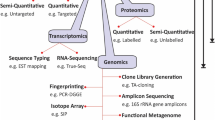Abstract
Until recently, the human microbiome was synonymous with the bacterial community. Fortunately, recent studies have shown that the human microbiome is complex and composed of bacteria, fungi and viruses. Characterizing the fungal community “mycobiome” in health (involving oral cavity, skin, and gastrointestinal tract body sites) is paving the way to defining the changes that this community undergoes in disease. Although the number of studies investigating the mycobiome in disease is small, findings from these investigations are exciting and beginning to show that fungi, apart from their role as normal flora or direct pathogens, may aggravate disease symptoms in specific patient populations (e.g., inflammation in patients with ulcerative colitis). Such unexpected findings provide impetus for the conduct of research aimed at elucidating the role of the fungal community, and its interactions with other microbial communities, in immunocompromised diseases. Funding of these research efforts is warranted.

Similar content being viewed by others
References
Balter M. Taking stock of the human microbiome and disease. Science. 2012;336(6086):1246–7.
The Human Microbiome Project Consortium. Structure, function and diversity of the healthy human microbiome. Nature. 2012;486(7402):207–14.
Grice EA, Segre JA. The human microbiome: our second genome. Annu Rev Genomics Hum Genet. 2012;13:151–70.
IOM (Institute of Medicine). The human microbiome, diet, and health: workshop summary. Washington, DC: The National Academies Press; 2012.
Turnbaugh PJ et al. A core gut microbiome in obese and lean twins. Nature. 2009;457(7228):480–4.
Turnbaugh PJ et al. An obesity-associated gut microbiome with increased capacity for energy harvest. Nature. 2006;444(7122):1027–31.
White TC. Is the human microbiome too bacteriocentric? Microbe. 2009;4(12):536.
Bonomo RA. Literature review 2010. In: 50th Intescience Conference on Antimicrobial Agents and Chemotherapy. Boston: American Society for Microbiology; 2010.
Casadevall A. Faculty of 1000 evaluation for Ghannoum et al. PLoS Pathog. 2010;6(1):e1000713. Faculty of 1000 Biology, 2010.
Deresinski S. In the literature (The oral mycobiome). Clin Infect Dis. 2010;51(6):iii–iv.
The Human Microbiome Jumpstart Reference Strains Consortium. A catalog of reference genomes from the human microbiome. Science. 2010;328(5981):994–9.
Mathieu A et al. Life on human surfaces: skin metagenomics. PLoS One. 2013;8(6):e65288.
Ghannoum MA et al. Characterization of the oral fungal microbiome (mycobiome) in healthy individuals. PLoS Pathog. 2010;6(1):e1000713.
Grice EA, Segre JA. The skin microbiome. Nat Rev Microbiol. 2011;9(4):244–53.
Kong HH. Skin microbiome: genomics-based insights into the diversity and role of skin microbes. Trends Mol Med. 2011;17(6):320–8.
Gioti A et al. Genomic insights into the atopic eczema-associated skin commensal yeast Malassezia sympodialis. MBio. 2013;4(1):e00572–12.
Saunders CW, Scheynius A, Heitman J. Malassezia fungi are specialized to live on skin and associated with dandruff, eczema, and other skin diseases. PLoS Pathog. 2012;8(6):e1002701.
Sanfilippo AM et al. Common pediatric and adolescent skin conditions. J Pediatr Adolesc Gynecol. 2003;16(5):269–83.
Findley K et al. Topographic diversity of fungal and bacterial communities in human skin. Nature. 2013;498(7454):367–70.
Iliev ID et al. Interactions between commensal fungi and the C-type lectin receptor dectin-1 influence colitis. Science. 2012;336(6086):1314–7.
Scanlan PD, Marchesi JR. Micro-eukaryotic diversity of the human distal gut microbiota: qualitative assessment using culture-dependent and -independent analysis of faeces. ISME J. 2008;2(12):1183–93.
Moyes DL, Naglik JR. The mycobiome: influencing IBD severity. Cell Host Microbe. 2012;11(6):551–2.
Shepard CW et al. Hepatitis B virus infection: epidemiology and vaccination. Epidemiol Rev. 2006;28:112–25.
Chen Y et al. Correlation between gastrointestinal fungi and varying degrees of chronic hepatitis B virus infection. Diagn Microbiol Infect Dis. 2010;70(4):492–498.
Ott SJ et al. Fungi and inflammatory bowel diseases: alterations of composition and diversity. Scand J Gastroenterol. 2008;43(7):831–41.
Brown KS et al. Mannan binding lectin and viral hepatitis. Immunol Lett. 2007;108(1):34–44.
Knoke M. [Gastrointestinal microecology of humans and Candida]. Mycoses. 1999;42 Suppl 1:30–4.
Guttman-Yassky E, Nograles KE, Krueger JG. Contrasting pathogenesis of atopic dermatitis and psoriasis–part I: clinical and pathologic concepts. J Allergy Clin Immunol. 2011;127(5):1110–8.
Johnson MA, Armstrong AW. Clinical and histologic diagnostic guidelines for psoriasis: a critical review. Clin Rev Allergy Immunol. 2013;44(2):166–72.
Pierard-Franchimont C, Xhauflaire-Uhoda E, Pierard GE. Revisiting dandruff. Int J Cosmet Sci. 2006;28(5):311–8.
Jo JH et al. Pustular psoriasis and the Kobner phenomenon caused by allergic contact dermatitis from zinc pyrithione-containing shampoo. Contact Dermatitis. 2005;52(3):142–4.
Park HK et al. Characterization of the fungal microbiota (mycobiome) in healthy and dandruff-afflicted human scalps. PLoS ONE. 2012;7(2):e32847.
Bloemberg GV, Lugtenberg BJ. Molecular basis of plant growth promotion and biocontrol by rhizobacteria. Curr Opin Plant Biol. 2001;4(4):343–50.
Lodwig EM et al. Amino-acid cycling drives nitrogen fixation in the legume-Rhizobium symbiosis. Nature. 2003;422(6933):722–6.
Smith SE, Read DJ. Mycorrhizal symbiosis. 2nd ed. San Diego: Academic; 1997.
Walsh UF, Morrissey JP, O'Gara F. Pseudomonas for biocontrol of phytopathogens: from functional genomics to commercial exploitation. Curr Opin Biotechnol. 2001;12(3):289–95.
Morrissey JP et al. Are microbes at the root of a solution to world food production? Rational exploitation of interactions between microbes and plants can help to transform agriculture. EMBO Rep. 2004;5(10):922–6.
Compliance with Ethics Guidelines
Conflict of Interest
MA Ghannoum declares no conflicts of interest.
PK Mukherjee declares no conflicts of interest.
Human and Animal Rights and Informed Consent
Written informed consent was obtained from all participants in this study. One study that is described in this review entitled “Characterization of the Oral Fungal Microbiome (Mycobiome) in Healthy Individuals” involved human subjects. Recruitment of study participants in that study was performed according to protocol (number 20070413) approved by the Human Subjects Institutional Review Board (IRB) of Case Western Reserve University, Cleveland, Ohio.
Author information
Authors and Affiliations
Corresponding author
Rights and permissions
About this article
Cite this article
Ghannoum, M.A., Mukherjee, P.K. The Human Mycobiome and its Impact on Health and Disease. Curr Fungal Infect Rep 7, 345–350 (2013). https://doi.org/10.1007/s12281-013-0162-x
Published:
Issue Date:
DOI: https://doi.org/10.1007/s12281-013-0162-x




